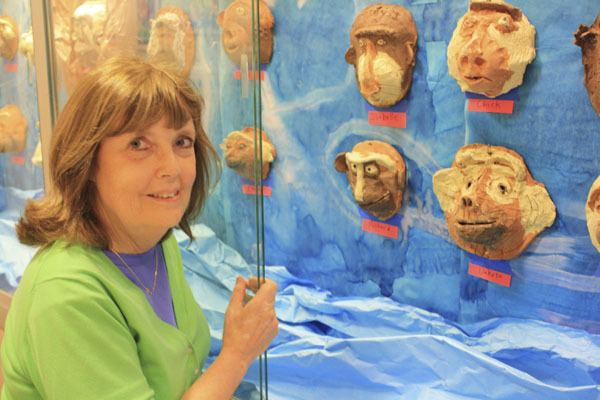Thousands of pieces of art created by kids. Countless hours of inspiration for classroom teachers. An impressive amount of dollars put in the pockets of more than 100 local artists.
According to Pamela McMahan, these are the legacies of Vashon Artists in the Schools (VAIS), a program she helped launch more than 20 years ago and is now once again at its helm.
“It’s amazing to me that it has had so many long-lasting accomplishments,” she said.
McMahan, a soft-spoken but passionate advocate for the program, remembers when she banded together with a group of like-minded Islanders and wrote VAIS’s first grant in 1988 — an application that won more than $40,000 from the King County Arts Commission (now known as 4Culture).
McMahan raised a family on Vashon from the late 1970s to mid-1990s but only recently moved back to the Northwest after living on the East Coast. She jumped at the chance to apply for a part-time position to coordinate VAIS when it opened up last fall.
“It’s so exciting to bring teachers and artists together,” she said.
The program, a collaboration between the Vashon School District and Vashon Allied Arts, provides direct instruction in various art forms while using the arts in an integrative way to enhance learning in all subject areas. Over the years, it has had a big impact.
“Over 80 percent of Vashon school students, over the course of the last 25 years, have experienced multiple artists-in-the-schools’ residency programs,” McMahan said, adding that in the 2011-12 school year alone, 1,500 students will participate in 18 residencies at Chautauqua Elementary, McMurray Middle School and Vashon High School.
The way that it all works is detailed on the school district’s website, which also boasts a roster of almost 50 participating artists who currently offer residencies in everything from basket-weaving to drumming and poetry.
Teachers use the program in a variety of ways, McMahan said, describing a residency by local performer Kevin Joyce in Harris Levinson’s high school Spanish class that helped students learn the use of subjunctive verb tenses through the use of song.
The program, with an annual budget of approximately $30,000, is currently funded by grants, foundations, individuals and Vashon’s Partners in Education. The school district provides about one-third of the program’s costs.
Artists selected for residencies are paid $40 to $50 dollars an hour for programs that last 10 to 30 hours. Their payments account for 90 percent of the program’s expenses.
School superintendent Michael Soltman said VAIS is unique.
“What’s different here is that this is a coordinated, well-funded program with a lot of support and credibility,” he said. “It’s welcomed and supported by staff. The quality is predictable — the teachers know the artists. It’s built on relationships over time, and yet every year it is so creative and fresh.”
Teachers also have great things to say about the program.
“Teaching can be kind a lonely profession,” said Chautauqua art teacher Carolyn Buehl. “So it’s really lovely to have people come into your sphere with these children — you spark off each other and it’s a tool for discovery.”
Buehl is excited about her most recent experience with the program — a collection of ceramic primate faces made by the school’s students under the supervision of Island potter Liz Lewis.
Islanders can get a glimpse of the results during this Friday’s gallery cruise, when more than 100 of the faces will be on display in the hallway of the Vashon Bookshop.
Lewis, for her part, said she was also thrilled by the children’s work.
“The outcomes of these residencies are truly mind blowing,” she said. “After the hustle and bustle of the process — as with the monkeys — and the dust has literally settled, Carolyn and I load the pieces into the kiln, and have moments to actually see what the kids did and say, ‘Who did what, how funny is that, look at this detail.’ Who knew they were noticing and seeing so much?”


